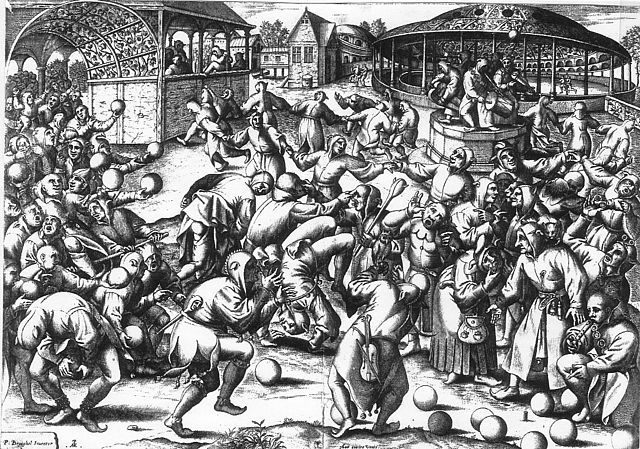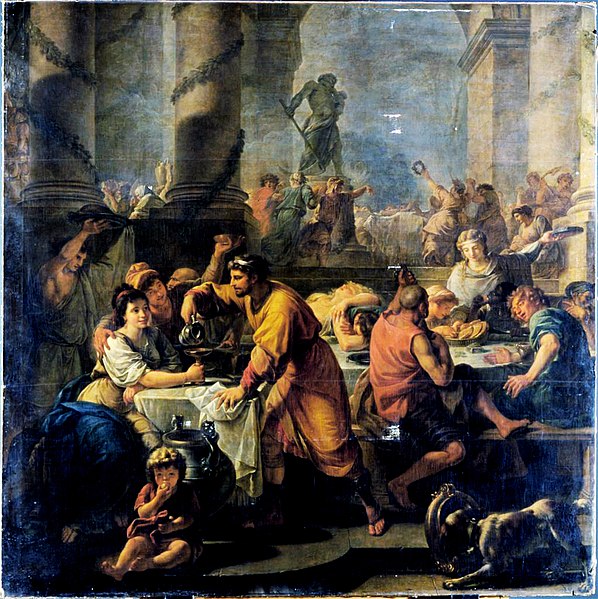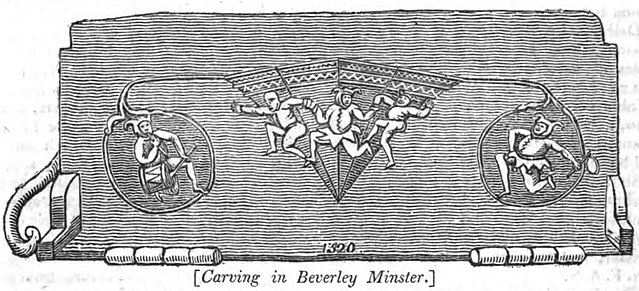The Feast of Fools or Festival of Fools was a feast day on January 1 celebrated by the clergy in Europe during the Middle Ages, initially in Southern France, but later more widely. During the Feast, participants would elect either a false Bishop, false Archbishop, or false Pope. Ecclesiastical ritual would also be parodied, and higher and lower-level clergy would change places. The lack of surviving documents or accounts, as well as changing cultural and religious norms, has considerably obscured the modern understanding of the Feast, which originated in proper liturgical observance, and has more to do with other examples of medieval liturgical drama, though there is some connection with the earlier pagan (Roman) feasts of Saturnalia and Kalends or the later bourgeois in Sotie. Over the course of a week, the ceremonies would be led by different people in positions of power within the church. On December 26, St. Stephen's Day, the deacons led the ceremonies. The sub-priests were in charge on December 27, St. John's Day, the choirboys on December 28, Holy Innocents’ Day, and the sub-deacons on the first of January, the Feast of the Circumcision. There is some disagreement on whether the term Feast of Fools was originally used to refer to the collection of days or specifically the celebrations taking place on the first of January. The word "fool" is used as a synonym for humble, as was common in the 11th century, rather than the modern use that treats it as another term for clown or jester.

Narrenkonvent um 1500. Pieter Breugel, südniederländischer Maler, Zeichner und Druckgrafiker. Antwerpen (1551–1563), Italien (1553), Brüssel (1563–1569)
Feast of Fools, Misericord carving in Beverley Minster, East Yorkshire
Saturnalia is an ancient Roman festival and holiday in honour of the god Saturn, held on 17 December of the Julian calendar and later expanded with festivities through 19 December. By the 1st century B.C., the celebration had been extended through 23 December, for a total of seven days of festivities. The holiday was celebrated with a sacrifice at the Temple of Saturn, in the Roman Forum, and a public banquet, followed by private gift-giving, continual partying, and a carnival atmosphere that overturned Roman social norms: gambling was permitted, and masters provided table service for their slaves as it was seen as a time of liberty for both slaves and freedmen alike. A common custom was the election of a "King of the Saturnalia", who gave orders to people, which were followed and presided over the merrymaking. The gifts exchanged were usually gag gifts or small figurines made of wax or pottery known as sigillaria. The poet Catullus called it "the best of days".

Saturnalia (1783) by Antoine-François Callet, showing his interpretation of what the Saturnalia might have looked like
Ancient Greek painting signed by "Alexander of Athens", discovered in Herculaneum, showing five women playing knucklebones, a game which was played during the Attic holiday of Kronia.
2nd-century CE Roman bas-relief depicting the god Saturn, in whose honor the Saturnalia was celebrated, holding a scythe.
Ruins of the Temple of Saturn (eight columns on right) in Rome, traditionally said to have been constructed in 497 BC






